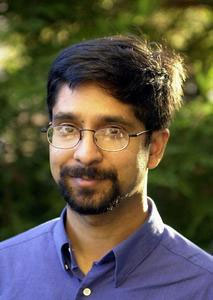
[Editor's note: The Tyee is proud to co-publish with Rabble.ca a multi-part investigation of Maker Culture -- the do-it-yourself movement fast evolving in North America and beyond. This is episode seven of 11, and would normally have run last Friday, but Olympics madness intruded. Look for number eight to run this Friday.]
When his wife was diagnosed with a hereditary disease, Peter Johnson wanted to help. Using a program called Folding @ Home, he found a way to make a difference -- by doing genetic research on his home computer. Due to the sensitive nature of his wife's illness, Peter requested that his last name is changed for the purpose of this story to protect his family's privacy.
"I remember just going into a fix-it mode like most people do," he said. "You try to look for things you can do to contribute or to help in some way. I couldn't throw money at the problem, so I thought I'd look at this, see what it does."
What Folding @ Home does is simulate protein folding. Problematic folding is known to play a role in diseases like Alzheimer's, Parkinson's, and Cystic Fibrosis. With this software, which can be installed on a personal computer or Playstation 3 console, users are helping the scientific community understand the things that can go wrong in the body. For people like Johnson, it's meant that making a difference as a citizen scientist is as easy as running the software overnight. Johnson doesn't have a laboratory, or a degree -- but nonetheless, he is a scientist. He's part of a growing movement of citizens taking an active interest in science, and often making it themselves. Given the right tools, one science maker starts making a difference, and soon, he may be joined by others: his fellow citizen scientists.
"I'm trying to encourage other people to get involved. Just sending the word quietly can do a lot of good," he explains.
Citizen scientists like Peter do, in fact, do a lot of good. Vijay Pande is a professor at Stanford University and the creator of Folding @ Home. According to Pande, average people are more than willing to use their computer power to assemble proteins -- with or without a background in science.
According to Pande, four million computers working together to create the world's largest supercomputer are pulling in mass amounts of data for the scientific community. But it's not just the scientists who are benefiting from this project -- the people who are getting involved are also getting a lot out of their contributions.
"So the [citizen] scientists who helped us really had a huge contribution in terms of the donations they made in computer time," Pande said. "Along the way, I think we've been able to reach them and teach them a bit about protein folding."
Many scientists agree that citizen involvement is important for both the scientific community and the public. Dr. Micheal Shermer is a proponent of open source science -- the basis on which software like Folding @ Home works. For scientists, Shermer says opening up has many advantages.
"The more access more scientists can have to analyzing data, the closer to truth we're likely to get," he said. Conducting science in an open, transparent way can help the public learn to place more trust in science.
"Basic research in physics, chemistry and biology -- I think it's better the better to have it open for anyone to examine," said Shermer. "It takes the secrecy away from it."
Studying the stars
Another example of citizen science is Galaxy Zoo. It's citizen-friendly astronomy research, where the only equipment required is an Internet connection and a mouse. Hanny Van Arkel never studied astronomy in school. But in 2007, the 25-year old teacher from the Netherlands spotted an astronomical object that had never been seen before.
"In the first week I was classifying, I saw something I didn't recognize. I was curious about what it was, and I sent an email to the astronomers asking what it was. They said, 'We don't know either.'"
Now, the object known as Hanny's Voorwerp is the subject of much research. Since her discovery, Van Arkel has gotten more involved with science. Now she teaches others about the wonders of space.
"There are new things I can do because of [my discovery]," she said. "I go to schools and show pictures of it and I tell people about the science we are doing. It's very exciting." Van Arkel credits her inexperience for helping her find something others might have missed. "I wasn't the first person who saw the picture, but I was the first person to ask the question, 'What is this?' And there are other pictures out there -- you could still discover something."
Since the Galaxy Zoo website launched in 2007, discoveries have been made by people looking at images freshly captured by satellites. Volunteers judge these images based on the shape the galaxies form. In the first year alone, 50 million classifications were made by a group of users 150,000 strong. Alice Sheppard from the U.K., now a Galaxy Zoo forum moderator, has been involved since the very beginning.
"Most days I am glued to the screen for a couple of hours. I am quite an addict." Sheppard said contributing to Galaxy Zoo changed her life. "It's something, I don't know, deep down in my mind, as if I've been longing for it and I've suddenly been granted a wish I didn't even know I had," said Sheppard.
"I always thought there was something missing and what was missing was the talking about it, the actual scientific method, the right way to ask questions, the joy of it and how important it is to get things right. We are the first people treading this boundary. We are not just memorizing somebody else's work -- we are doing it."
Pauline Barmby, an associate professor at the University of Western Ontario in physics and astronomy, said Galaxy Zoo works by capitalizing on the skills of people like Sheppard.
"It's easy to program a computer to find the galaxies in an image, but it's very hard to program a computer to tell you what kind of galaxy, what shape it is and whether there are any other interesting features. So I think it's a fantastic idea to train a bunch of volunteers to do this."
She said astronomy has traditionally been more receptive to everyday people getting involved. Galaxy Zoo is furthering this.
"Astronomy, compared to a lot of other fields, has had a fairly long tradition of being open source. Galaxy Zoo pushes the envelope a little bit because it's not just making data available and letting them look at the pictures, but actually asking them to contribute."
Equations and extra-sensory perception
Examples of citizen science abound -- Galaxy Zoo, Galaxy Zoo2, Folding @ Home and World Community Grid, to name a just a few. On the other side of the equation is science itself. One example of science itself changing from the inside out is mathoverflow.net -- a website where research mathematicians can ask each other math questions. David Brown, mathoverflow creator, said the site is an open approach to information.
"The problem we were trying to solve with this website was: how can we access mathematical knowledge in an efficient way?"
As a PhD student in California, Brown tried using email lists and math forums. But he was disappointed, finding more arguments than answers. Mathoverflow was his solution to this problem, and the site was brought online earlier this year.
"It's not a discussion forum. People are supposed to post complete, self-contained answers. Then the best answers get voted to the top and the worst ones are voted to the bottom. And it turns out this solves a lot of the problems that other sites had."
Anton Geraschenko, another moderator and math graduate student, explained that another reason the site works so well is that it is perfectly suited to asking and answering math questions.
"A very successful strategy for doing mathematics is to take any problem you have and break it down into a series of smaller steps that you can complete," he said. "It's very common for researchers to chat with other people about those questions at the department tea, for instance."
But Brown and Geraschenko know that not everyone is as interested in sharing as they are. Brown said there are still many researchers who prefer private research over public collaboration.
"We're definitely not going to have the entire math community using this, because there are a lot of mathematicians that don't like having such public information. They never volunteer any information unless they are absolutely sure it's correct. On the other hand, there are a lot of mathematicians who operate best by going to tea and asking others about the questions that they have. The people who gravitate towards doing that type of research gravitate towards mathoverflow."
What works in mathematics also works in parapsychology research. Dr. Rupert Sheldrake is based in London, U.K., and he conducts most of his experiments online. For his work in studying psychic phenomena, he uses the Internet to find participants -- who contribute to his research from their desktops.
"I realized to get the maximum participation in telepathy tests -- the Internet provided a remarkable opportunity."
Sheldrake believes in the idea of sharing between scientists and citizens. In fact, he's not concerned about other people copying his research because it's online.
"I suppose other researchers could copy my experiments and do rival versions of what I'm doing," he said. "Actually, in my case, I rather wish they would."
Of course, not all science can be done on the web. To tackle that problem, another one of Sheldrake's ideas involves a major change in the way funding is distributed in areas of scientific research. He thinks citizen science should go beyond getting individuals to subscribe to new hobbies -- he believes scientific research ought to be directed, at least in part, by the public.
"You can't really do any chemistry with the public. Or quantum physics. There's only certain areas of science where you can engage people. I think areas like bird spotting, natural history -- these are certain areas where public participation really can play a major part. One per cent of science funding should go to fund research that ordinary people find interesting."
The history of helping out
Groundbreaking science pioneers did just that -- conduct experiments that people found interesting. Nikola Tesla and Douglas Engelbart weren't secretive white-coats experimenting for corporate interests. They were ordinary men -- made extraordinary by their passion for science and their determination to bring science to the public.
Another man who's spent his life advancing that cause is Don Nielson. Nielson, a historian at the Stanford Research Institute in California, was on the inside track of some of the big events in computer history -- including the Internet. He's worked alongside Douglas Engelbart, the man who invented the computer mouse, since the late '50s. He says Engelbart, now 84, ran a lab that encouraged collaboration between scientists when they developed the mouse.
"It was a free flow of people in and out, all with whatever they had to contribute," Nielson said.
However, when it comes to the public collaborating on science projects, Nielson isn't ready to put his trust in the results.
"Sometimes the product that might come out of [open source science] may well be better than a few people collaborating on it, but it also may be worse," Nielson said. "I think those kinds of open collaborative efforts are still to prove themselves as a universal or uniform way to approach problems." ![]()
Read more: Science + Tech



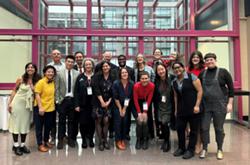

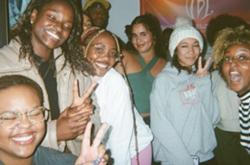



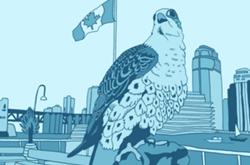
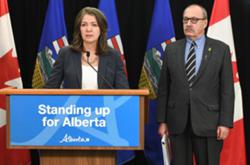

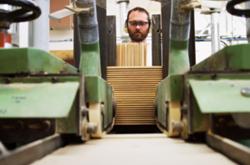
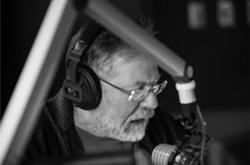

Tyee Commenting Guidelines
Comments that violate guidelines risk being deleted, and violations may result in a temporary or permanent user ban. Maintain the spirit of good conversation to stay in the discussion.
*Please note The Tyee is not a forum for spreading misinformation about COVID-19, denying its existence or minimizing its risk to public health.
Do:
Do not: